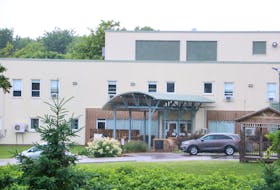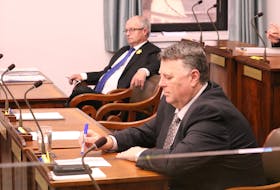Fiep de Bie
Guest Opinion
When the 10-turbine East Point wind farm was proposed in 2006, a group of concerned birders and members of the Natural History Society and Island Nature Trust came together to discuss the best ways to mitigate and avoid bird mortality at East Point.
The area is well-known as a hot spot for migratory birds. Thousands of birds funnel to the point for their southerly migration in the fall and enter P.E.I. at the point in the spring.
The greatest numbers of vulnerable bird species occur along coastal and migratory pathways.
The government at the time, with Jamie Ballem as minister of the environment, listened to our concerns. As a compromise, a zone, in the form of a red triangle was established as a “no go” area for wind turbines. As a result of the meeting, the wind turbines were moved away from the point and also placed in a straight line, parallel to the land, to try to avoid bird collisions.
We suspected that at some point there would be pressure to build more wind turbines in or close to this crucial red triangle. After all, East Point is a windy area and turbines can generate profits. In the new 2019 proposal put forward by the P.E.I. Energy Corporation, the option for the seven turbines shows one that is very close to the red zone.
Wind turbines represent green and alternative energy, a move away from a dependency on fossil fuels. How can a wind farm be justified when a green space is compromised to make room for it? The project takes away carbon sinks, such as the trees and wetland at the proposed wind farm at Eastern Kings and will harm wildlife in the process. The province is committed to meeting its target of protecting seven per cent of P.E.I.’s land base by the end of 2020. Currently, P.E.I.’s protected natural areas stands at 3.6 per cent.
Scientists studied wind projects in Ontario for 10 years. They found that each wind turbine kills around five birds and 12 bats every year.
Wind farms have a large ecological footprint. Having worked as a bird surveyor at several wind farm projects on P.E.I., I have seen the changes firsthand. Wide corridors and lanes are cleared for building turbines and to establish transmission lines.
Habitat changes can cause animals to lose their sources of food, hiding spots or breeding places. These animals need to find somewhere else to live.
Migrating birds might have to find a new route. These behavioural changes can happen when animals must find new ways to safely travel. There is also potentially lower biodiversity in the areas around wind turbines. It can also put some species at risk when animals have trouble finding mates and places to nest. Plus, existing species at risk, such as the endangered Northern myotis (formerly known as Northern long-eared bat), can lose roosting habitat when a wind farm requires cutting trees.
The environmental assessment required by the province does serve a purpose in knowing which populations of wildlife are present, but the consulting company doing the assessment is selected by the proponent, and therefore, not an independent source.
The assessment doesn’t change the overall outcome, and in reality, the process is in place to approve the project and often with multiple mitigations. It makes one wonder why a site is selected if so many mitigations are needed. Locations for wind farms within natural areas should not be selected in the first place. A proactive, land-use approach is needed for wind energy projects and site selection so that natural areas and wildlife are protected.
Wind power is an important and welcome source of energy if the location of a wind farm is carefully considered. But a wind project proposal such as the project in Eastern Kings can cause big problems for wildlife.
Fiep de Bie is a wildlife technician and certified wildlife rehabilitator. As an avid birder, she visits East Point very regularly.








